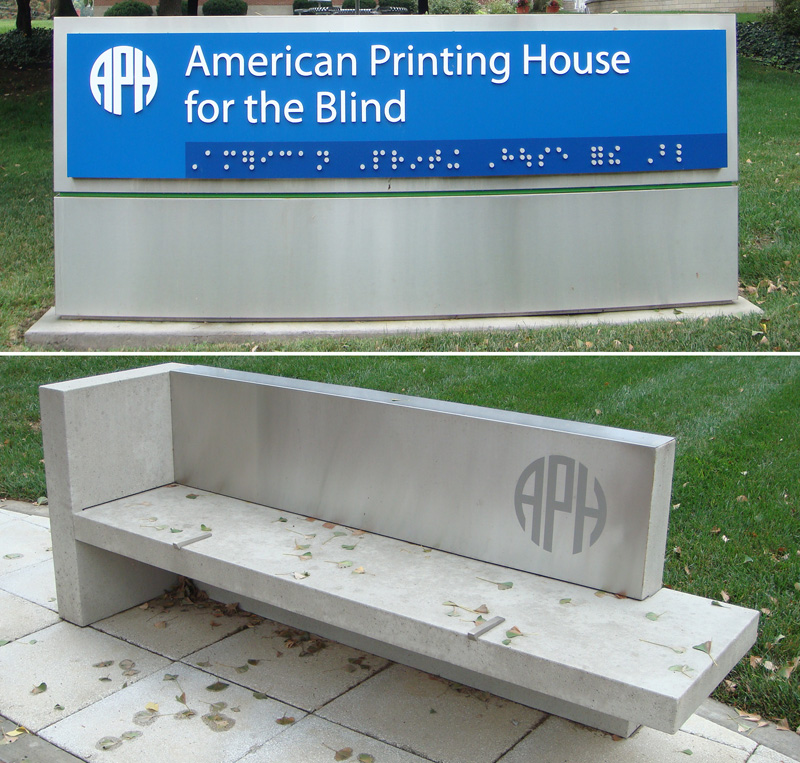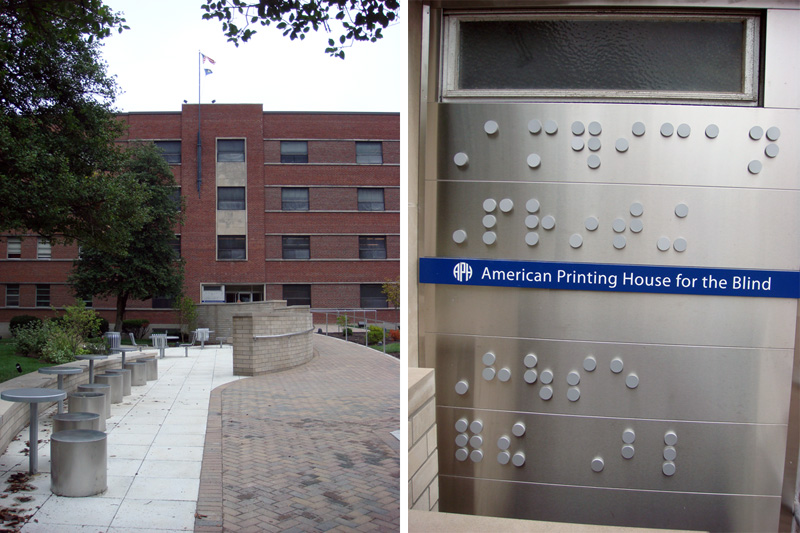The American Printing House for the Blind has built a new grand entrance to their facility on Frankfort Avenue in the Clifton neighborhood which was dedicated in June and has now had some time to settle in. We stopped by and snapped a few photos of the project and learned a little bit about the architectural history of the campus, too.

First, here’s the story behind the APH from their web site:
The American Printing House for the Blind is the world’s largest company devoted solely to researching, developing, and manufacturing products for people who are blind or visually impaired. Founded in 1858, it is the oldest organization of its kind in the United States. Under the 1879 federal Act to Promote the Education of the Blind, APH is the official supplier of educational materials for visually impaired students in the U.S. who are working at less than college level.
A new brick sidewalk with leads to the building entrance, but along the way new stainless steel and limestone benches line the well-lit path along with a sleek new outdoor sitting area. All the signage incorporates Braille script (although we’re not sure how useful the main sign with mega-braille, above, will be to the passers by, it still looks really nice!) and the entire walk has a definite tactile quality about it. Information kiosks dot the front yard explaining the history of the facility. One panel about the architecture of the campus caught our attention:
Although APH looks like one large building, it is really fourteen! The original 1883 factory, designed by Charles Clarke, was a three story Italianate brick structure. That building is largely hidden today. You can see hints of its appearance behind the right side of the main building. The public face of APH on Frankfort Avenue was built in 1955, and expanded in 1970. Louisville architect Arthur Tafel designed it in the International Style, also known as Bauhaus.
We felt compelled to investigate this hidden 19th century factory, and just as the sign indicates, a corner of the original structure peaks through several layers of additions (photo below). The modern APH facility is really quite large and lends a distinctly pleasant urban quality to the surrounding neighborhood. Inside, a museum featuring a new exhibit detailing the APH’s 150 years of “service and innovation” is available for tours. Overall, the new entrance adds a needed modern gesture to the campus, indicating the modern nature of the industry. The clean lines and graceful arcs in the outdoor space make a welcome addition to the sometimes hectic street life of the Frankfort Avenue corridor.
- American Printing House for the Blind (Official Site)



